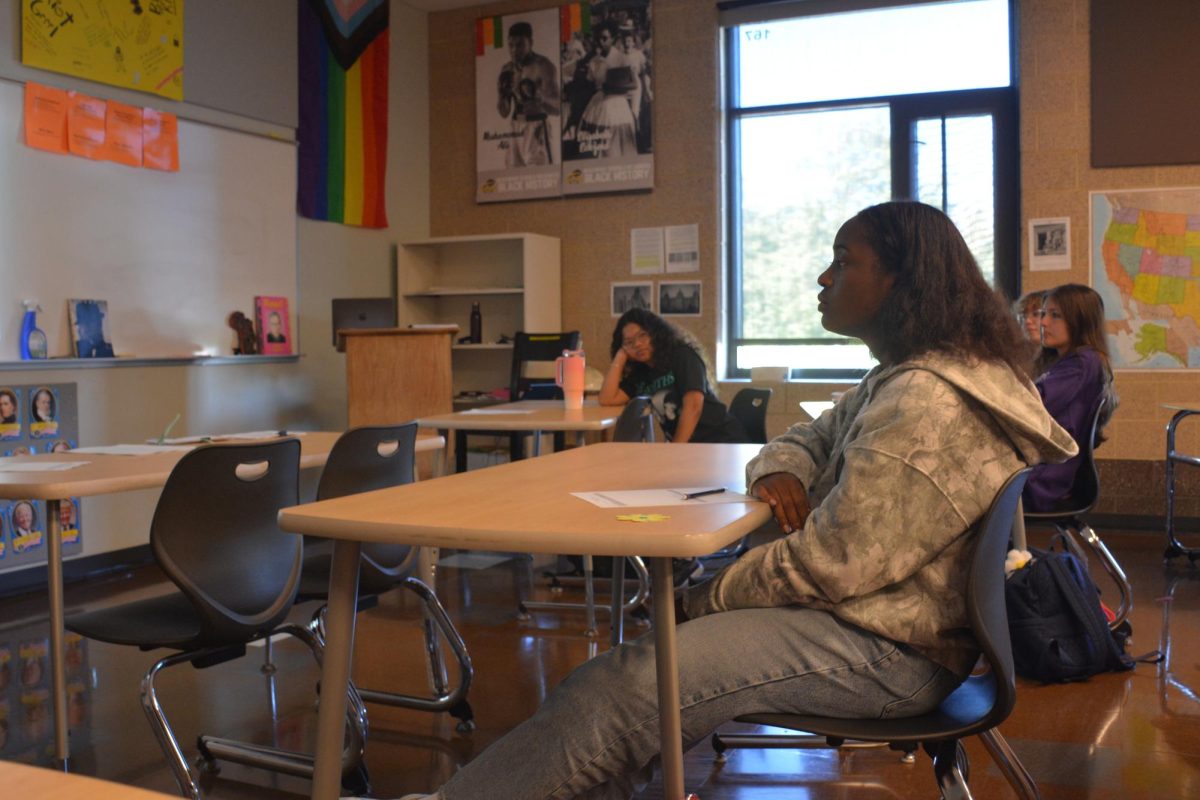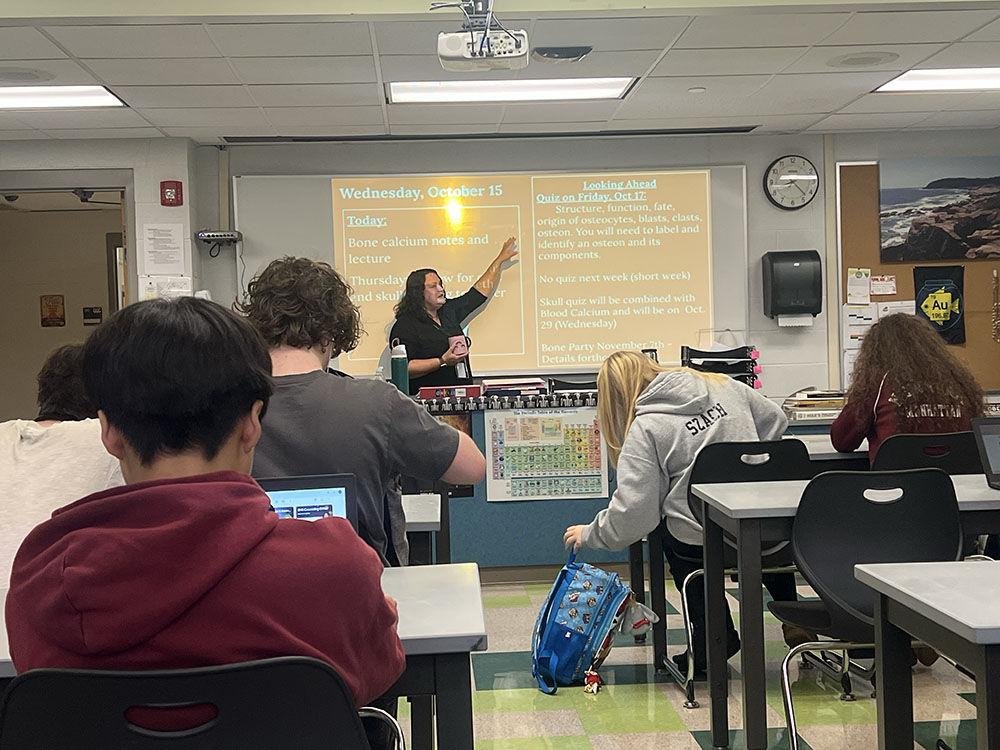Ohio’s two-year state operating budget (HB 96), signed this summer by Governor DeWine, will bring additional funding to some local school districts, including Beachwood.
But while some districts anticipate noticeable increases, Ohio’s approach to funding public schools continues to raise questions about fairness, reliance on property taxes and whether enough is being done to meet student needs beyond the classroom.
Beachwood City Schools Treasurer Matt Brown explained that the district will see more money under the most recent budget.
“The district will receive additional funding from the state’s most recent budget (HB 96) in both fiscal year 2025-2026 and fiscal year 2026 – 2027,” Brown wrote in an email.
However, state aid remains a small piece of Beachwood’s financial operating picture.
“In Beachwood, state aid can range between 8% to 12% versus property taxes which is typically around 83%,” Brown wrote. “Though we are impacted by the budget process at the state level, the district does not feel the impact (positively or negatively) as much as some of the other districts across the state, particularly urban and rural school districts.”
In 2021, Ohio lawmakers State Rep. Bride Rose Sweeney (D-Cleveland) and Jamie Callender (R-Concord) introduced House Bill 1 which designed the bipartisan Fair School Funding Plan (FSFP) to reduce these disparities by tying funding to both the cost of educating a student and a school district’s ability to pay.
The bill allocated approximately $333 million additional a year for K-12 education funding — or about $2 billion overall. The rollout was supposed to take six years and is meant to change how public dollars are provided to K-12 schools. It would give additional support to local districts so they can rely less on property taxes.
According to Ohio House District 21 State Rep. Eric Synenberg (D-Beachwood), the FSFP is at the heart of the state’s education policy.
“We should continuously be looking to use the Fair School Funding Formula,” Synenberg wrote in an email. “It is a student-focused model aiming to provide equitable funding based on district wealth so that all Ohio students have access to a quality education, not just wealthy communities who can afford to pay more to support their local public school system.”
Under the new budget, Beachwood is projected to see a 26% increase in funding in fiscal year 2025-26 and a 17% increase in 2026-27. South Euclid-Lyndhurst will likely see a 3% decrease in 25-26 and a 0% change in 26-27. Cleveland Heights-University Heights SD will see a 4% decrease next year before a modest rebound, while Cleveland Metropolitan Schools are expected to remain flat.
But for districts like Beachwood, even increases only go so far. Brown emphasized that certain high-cost services — including mental health support, special education and career-technical programs — cannot be fully covered by state aid. Some of the additional funding for these high-cost services typically comes from federal aid.
School psychologist Christin Weyn explained.
“Another way [to pay for high cost services] would be grants from the government, which allows for schools to pay for additional services for their students,” Weyn said.
However, the amount of additional funding may decrease in the future as the House Appropriations Committee has approved a 15% cut to the U.S. Dept. of Education budget as well as 26% reductions in Title I funding to low income schools.
Beachwood Schools receives a federal grant for a mental health assistance partnership with Bellefaire JCB, a child service agency providing a variety of behavioral health, substance abuse, education and prevention services.
“The costs of these types of programs/services are extremely expensive and most districts would not be able to service their student population just based on state aid alone,” Brown wrote.
Preschool services also fall heavily on local taxpayers.
“The district receives about $100,000 in state aid for preschool special education costs,” Brown wrote. “Any additional costs associated with the services provided to respective students must be taken on by the local school district.”
Synenberg believes one of Ohio’s next big education investments should target these areas directly to provide more counselors, social workers and mental health professionals in schools.
“Positive mental health outcomes and academic success for our students is the greatest return on investment this state can have,” he wrote.
Still, the broader question of how much Ohio should rely on property taxes remains unsettled, and the current political climate in Ohio is towards reducing taxes.
Synenberg opposed an effort earlier this year to restrict the types of school levies local voters could approve, saying that it would not have offered “real property tax relief.”
Synenberg stressed that the state should carry more of the cost.
The effort was a vote to override a veto by Governor Mike DeWine which vetoed line-item 66 that would eliminate several types of levies, limiting the choices voters have in how to support their schools and local governments.
Governor DeWine also vetoed a provision that would have prevented school districts from carrying over more than 40% of revenue and requiring anything above that mark be refunded to taxpayers, a change that would have had a significant impact on Beachwood City Schools, which had a $22.5 million cash balance in 2024.
Synenberg feels that in the long term, Ohio needs to change the way it supports its schools.
“We should not be relying so heavily on property taxes to fund our schools,” he wrote. “The state of Ohio should be properly funding their public school system.”
There has been an ongoing concern among educators and Ohio families regarding the proper funding for public education in Ohio dating back to the DeRolph v. State of Ohio case, filed in 1991, in which the Ohio Supreme Court declared the state’s funding formula unconstitutional.
Brown agreed that shifting more costs to local taxpayers poses challenges.
“The more that burden shifts to the local community the harder it will be to ask for new tax levies on the ever increasing costs school districts are experiencing,” he wrote.
The state budget also substantially expands funding for private-school voucher programs and charter schools, further shifting public education dollars away from traditional public school districts. Teacher unions and school districts have criticized the bill for under-funding public education by as much as $2 billion while allocating $2.44 billion to vouchers for private schools.
For now, the Fair School Funding Plan will continue to roll out through 2026-27, with lawmakers pledging to see it through. But Brown cautioned that the state must keep its data updated for the formula to work fairly.
“The inputs are outdated and from 2022,” he wrote. “Those inputs need to be updated annually with the most recent information for the FSFP to work as intended.”
As both local officials and state lawmakers acknowledge, Ohio’s budget sets the stage — but the real test will be whether future decisions bring long-term equity to schools across the state.












![“My parents have always said that education is important. My parents are Chinese immigrants, I'm Chinese American, [and that's a] value that has always been ingrained in our community,” said Senior Lyndia Zheng, pictured with Tony Zheng](https://bcomber.org/wp-content/uploads/2025/10/DSC_4244.jpg)








